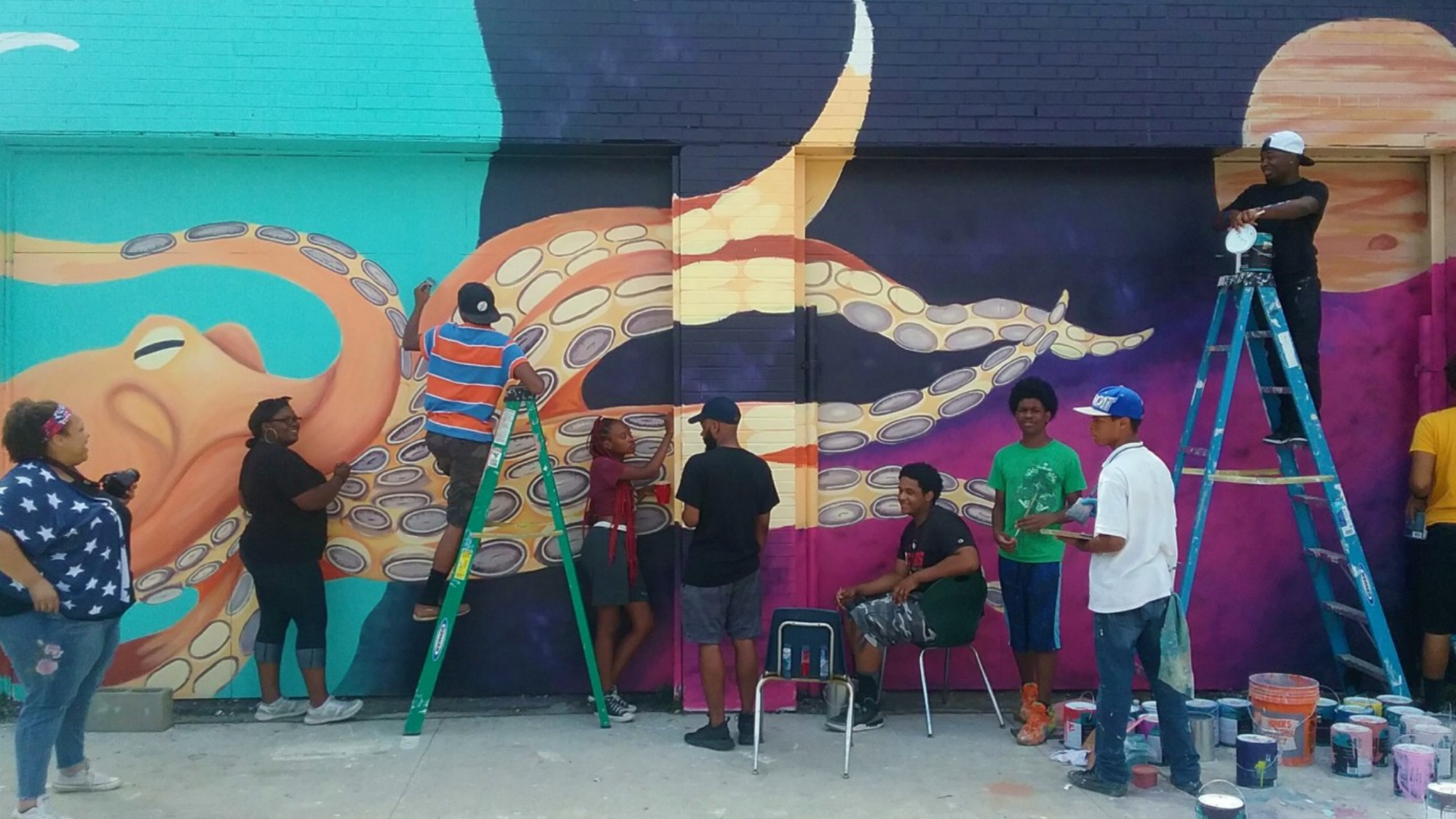
Recovery Playbook: Reprioritizing Community Engagement
This guide is part of the series Recovery Playbook, providing guidance on how communities can recover from the impacts of the pandemic.
This story is part of the series Recovery Playbook, providing guidance on how communities can recover from the impacts of the pandemic by prioritizing community engagement and quality of place.
Cities and towns have been forced adapt their placemaking and development efforts, so it’s no surprise that community engagement must also look different. However, it is important to consider the diverse needs of community members in order to appropriately engage them in community development.
By reprioritizing community engagement, place-based improvements can be people- and use-focused, which is the ultimate goal of creative placemaking.
We’ll take you through the steps to re-engage your community in community development. We will review considerations and challenges that may hinder your community engagement efforts and provide solutions and opportunities to help you overcome barriers.
You’ll learn:
- How to make a plan by identifying your community’s needs first.
- How to empower and engage your community.
- How to communicate meaningfully with your community.
- Innovative ideas for implementing community engagement.
First, it’s important to remember that community engagement is a framework rather than a single action or process. Thus, why a worldwide pandemic has made it imperative for communities to evaluate the guiding principles and approaches they undergo to develop trust and foster deep connections. These are required to create long-term change and growth. This is the goal of community engagement and essential to developing the quality of the place.
Community engagement is collaboration. Just like with any other collaboration, respecting the needs and rights of all community members to be informed, consulted, involved, and empowered is the foundation with which your community should approach your outreach and engagement.

Make a plan by identifying your community’s needs first.
Consider the collective impact you want to create and use this structure from the Stanford Social Innovation Review to engage your community. These five easy steps will ensure that whatever impact you are seeking, you will have a roadmap for success.
- Common Goal/Agenda — Start with a clear goal.
- Shared Measurement — Focus on solution-based approaches and agree on key data points.
- Mutually Reinforcing Activities — Each step you take should build upon the previous and consider the needs of each of the parties involved in the effort
- Continuous Communication — Proactively communicate and set expectations for future communications. Create a calendar.
- Backbone Organization — Identify who will be responsible for moving this work forward.

Empower and engage your community.
People are your biggest asset. Once you’ve identified and developed your plan, consider who makes up your community and how best to work together. Here’s how to recognize, respect, and ensure equity in your community engagement process.
Be inclusive by reviewing any access barriers, such as:
- Safety
- Accessibility
- Transportation
- Time
- Childcare
Be honest. Transparency is important, don’t avoid difficult conversations. Communicate proactively and intentionally.
Build trust. It takes time, so start conversations about space development with marginalized communities first.
Bring in experts. If your team doesn’t have training or skills, seek out experts who specialize in not only leading these conversations but can help you plan.
Take stock of your resources and tools and understand your technical needs. Knowing how much time you need, how much everything will cost, and even how many people you will need will make it easier to execute and ensure that you can approach your community with transparency.
Communicate meaningfully with your community.
One critical component of community engagement is communication. Communication in community engagement should not happen in just one direction, it requires more than one party, so be prepared to seek and check for understanding consistently. Consider these questions when deciding what communication approach and methods will work best.
How are you going to share information and request feedback?
Confirm the methods or tools you want to use and consider your existing assets first. You must be clear about why the community should be engaging and participating in your project and how it will impact them, so start with what’s working and then identify pain points.
How can you gather feedback?
What technologies do you need and how can you ensure accessibility of those technologies? Create timelines, deadlines, and calendars. Crowdsource! Consider how you can quickly and easily capture feedback through surveys.
How will that feedback be incorporated?
Make your communications clear and explicit with the next steps. Allow for questions and be proactive in sharing how the feedback will be used and plan to report back.
Innovative ideas for implementing community engagement.
So, what can a community engagement event look like? Getting your community engaged can take a variety of forms, but don’t let distance and disconnection prevent you from bringing people together.
Try out these innovative ideas in your community:
- Pop-up events to target specific communities.
- Add-on events to engage a specific group as a part of an existing community event (get permission first!).
- Touch-screen kiosks in community centers for participants to “stumble on” opportunities to engage.
- Mobile-friendly engagement options for smartphone and SMS users.
- Socially-distanced public workshops and open houses for people who prefer a face-to-face opportunity to speak with organizers and neighbors about the issues.

It’s easy to feel disconnected from your community right now, but the only way we solve our collective problems is by addressing them collectively. That’s why a critical key to recovery is reprioritizing community engagement.
It may take time, but your efforts will pay off if you stay flexible and listen closely. The best ideas and solutions are within your existing spaces and community, so making community engagement a priority will get you closer to building spaces that can create change.

